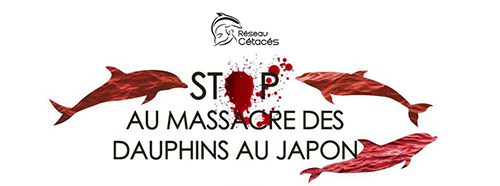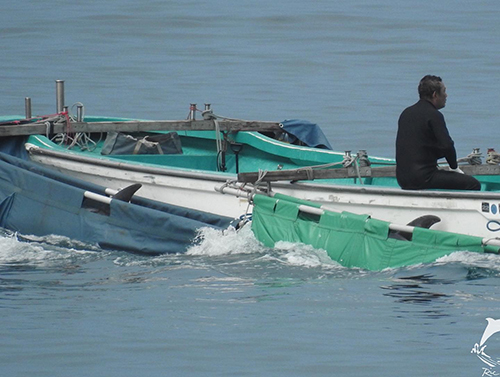The eighth catch of the season took place today
Monday, September 30, 2019, Taiji (Japan): The eighth catch of the season took place today in one of the most difficult hunts for hunters.
The hunters stopped en route to retrieve and transfer to a boat a dolphin that had emerged from the restraining sling and entered the bay. Ric O'Barry's Dolphin Project's Cove Monitors follow live and document hunts on adaily basis.
Terrifying catch numbers for the 2018/2019 season: The numbers speak for themselves: if the demand for dolphin meat for food consumption is declining, the demand for dolphinarium supplies is increasing! Clearly, without the demand of dolphinaria, the hunt would stop for lack of profitability: a dolphin is selling $ 154 000 to a water park. The cetacean meat is, for its part, sold off at $ 3 or $ 4 per 100 grams on the stalls of some supermarkets in Taiji. It is also useful to remember that cetacean meat has contamination levels that constitute a health risk for the consumer. * These figures do not take into account individuals who perish at sea (because they are too weak because of their age or their physical condition) when tracking the group or the process of turning to the shore. Other figures from previous hunts, see the Dolphin Project statistics. To act : Put an end to this barbarism is therefore relatively simple but requires the participation of all internationally: we must encourage the public not to go to dolphinarium.
Press contact: Sandra Guyomard (President)
|
|---|



